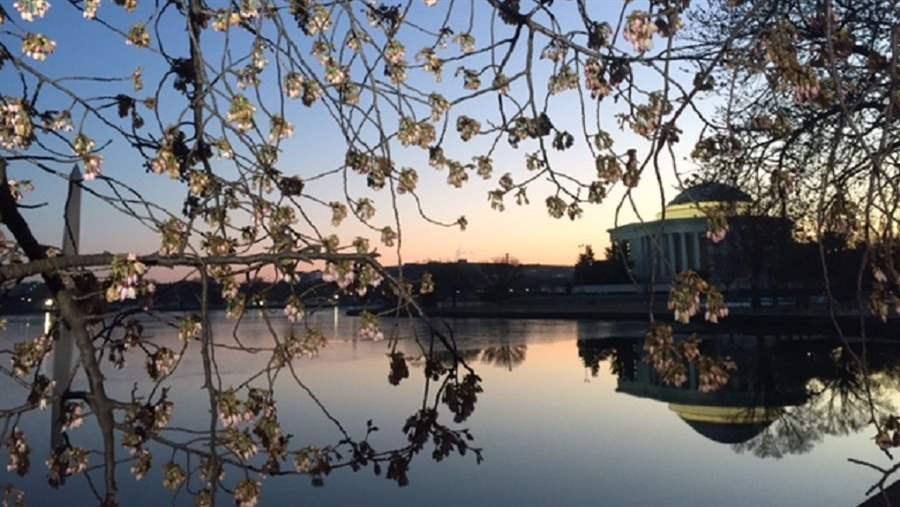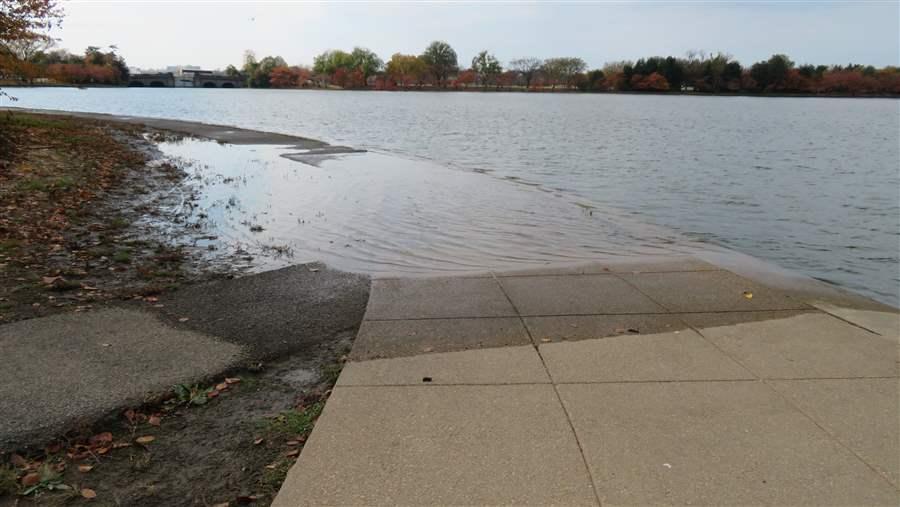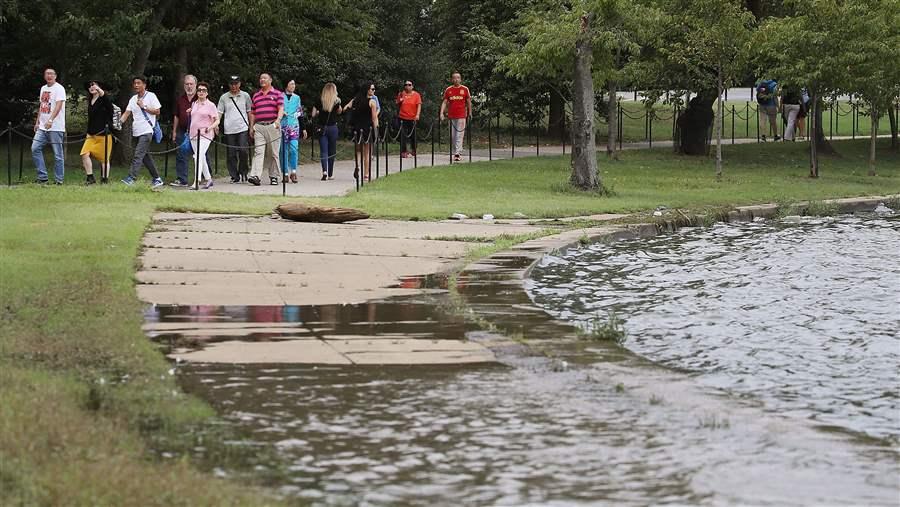Cherry Blossoms Face a Threat Worse Than Wild Weather
Crumbling seawalls highlight need to fund overdue national park repairs

Cherry blossom trees in bloom around the Tidal Basin in Washington. Frequent flooding linked to aging infrastructure is threatening some of the trees.
© National Park Service
One of Washington’s biggest tourist draws, the famous cherry trees, faces a bigger threat than the unusual temperature swings that stunted this year’s bloom. The Potomac River, which runs adjacent to many of the trees from the capital’s Tidal Basin to Hains Point, is running over failing seawalls almost daily and threatening to rot the trees’ roots.
The flooding has become so bad that the National Park Service, which manages the cherry trees, the surrounding land, and the seawalls, built a temporary path by the Jefferson Memorial to help visitors stay dry. But the trees still feel the impact.

Flooding near the Jefferson Memorial blocks a walkway and often soaks the cherry tree roots, causing damage.
© The Pew Charitable Trusts
Repairing the seawalls would cost $512.3 million—a hefty sum by any measure, but a particularly daunting price tag for an agency with a $12 billion backlog of deferred maintenance across all 417 national park sites. These issues range from crumbling roads, rotting historic buildings, and blocked trails to deteriorating memorials and outdated water, sewer, and electrical systems.
To resolve this problem, Congress should provide dedicated annual federal funding for national park repairs and ensure that infrastructure initiatives include provisions to address park maintenance. Policymakers should also direct more highway funding to maintenance of park roads, bridges, and tunnels and create more opportunities for public-private collaboration and donations to support park maintenance needs.
In the nation’s capital, the seawalls are sinking and the concrete is crumbling—issues that are visible to anyone walking along some of the sidewalks that hug the Potomac’s banks. In some places, the paths reveal the rebar that once held together missing pieces of concrete.

The National Park Service created a temporary path to help visitors avoid the rising water, but the cherry tree roots still feel the flooding impact.
© The Pew Charitable Trusts
If Congress takes action, the Park Service can fix these problems and save Washington’s cherry trees, which arrived in 1912 as a gift to the U.S. from the people of Japan. Otherwise the blossoms could become another casualty of the Park Service’s wait for adequate funding for infrastructure repairs. Our famous cherry trees: another reason to #FixOurParks.











